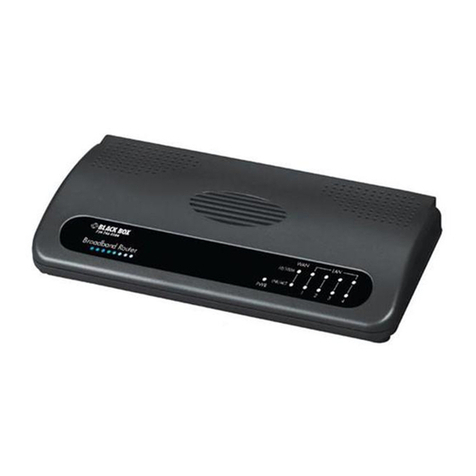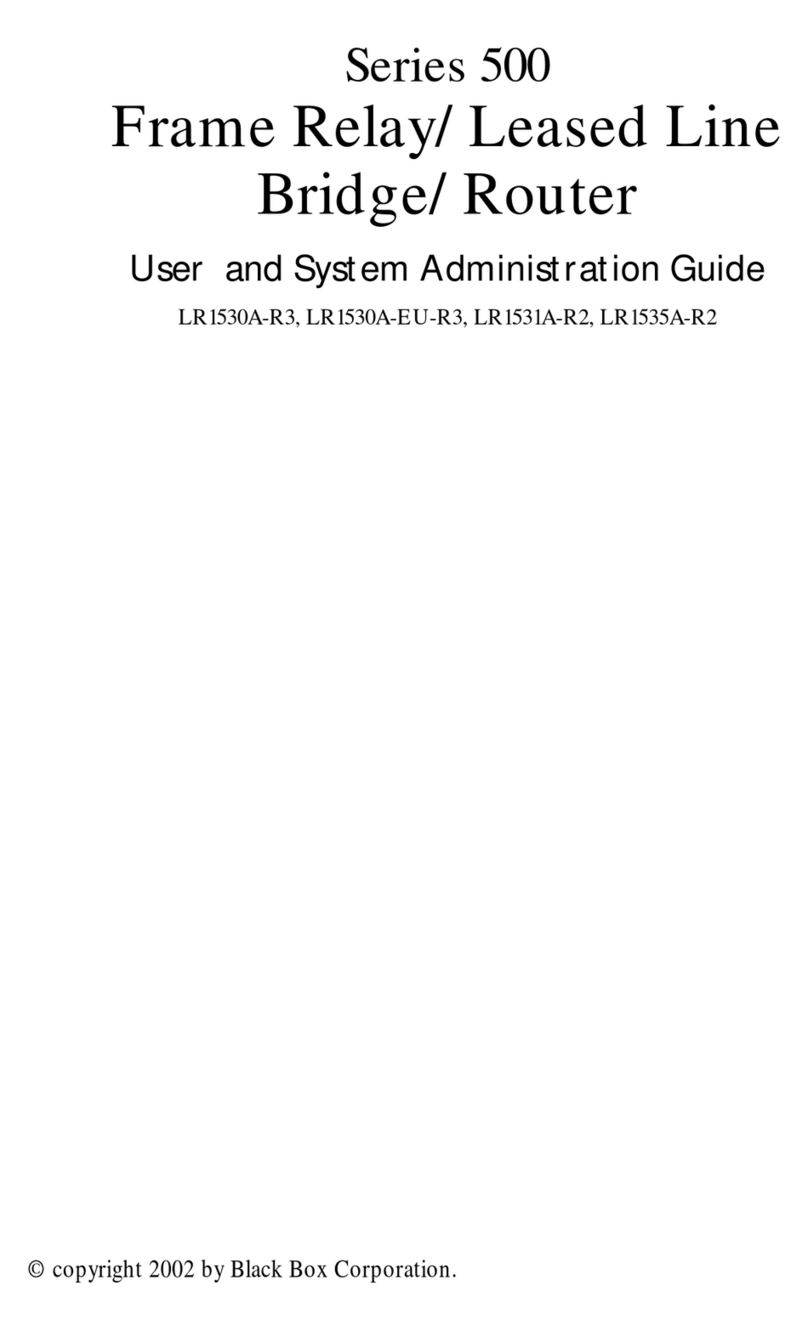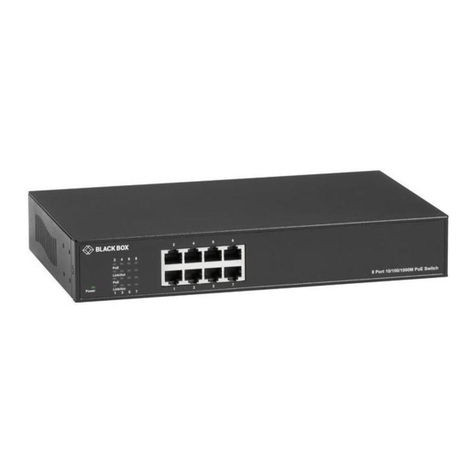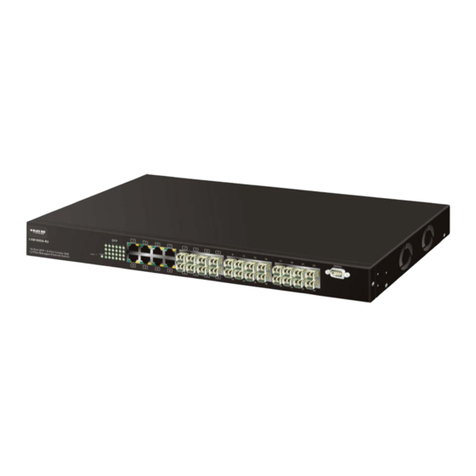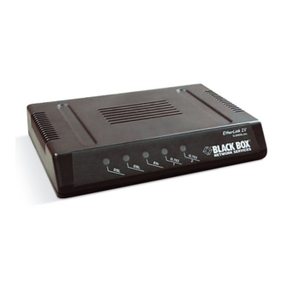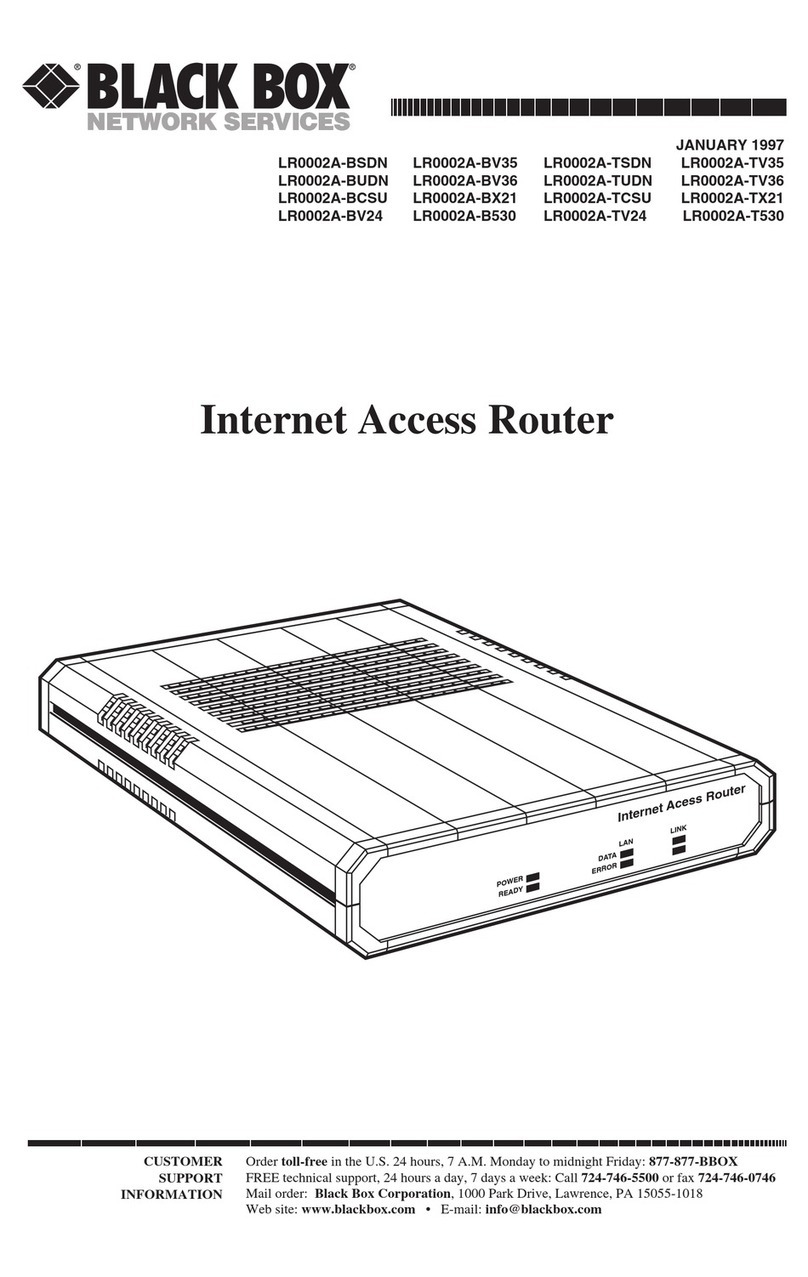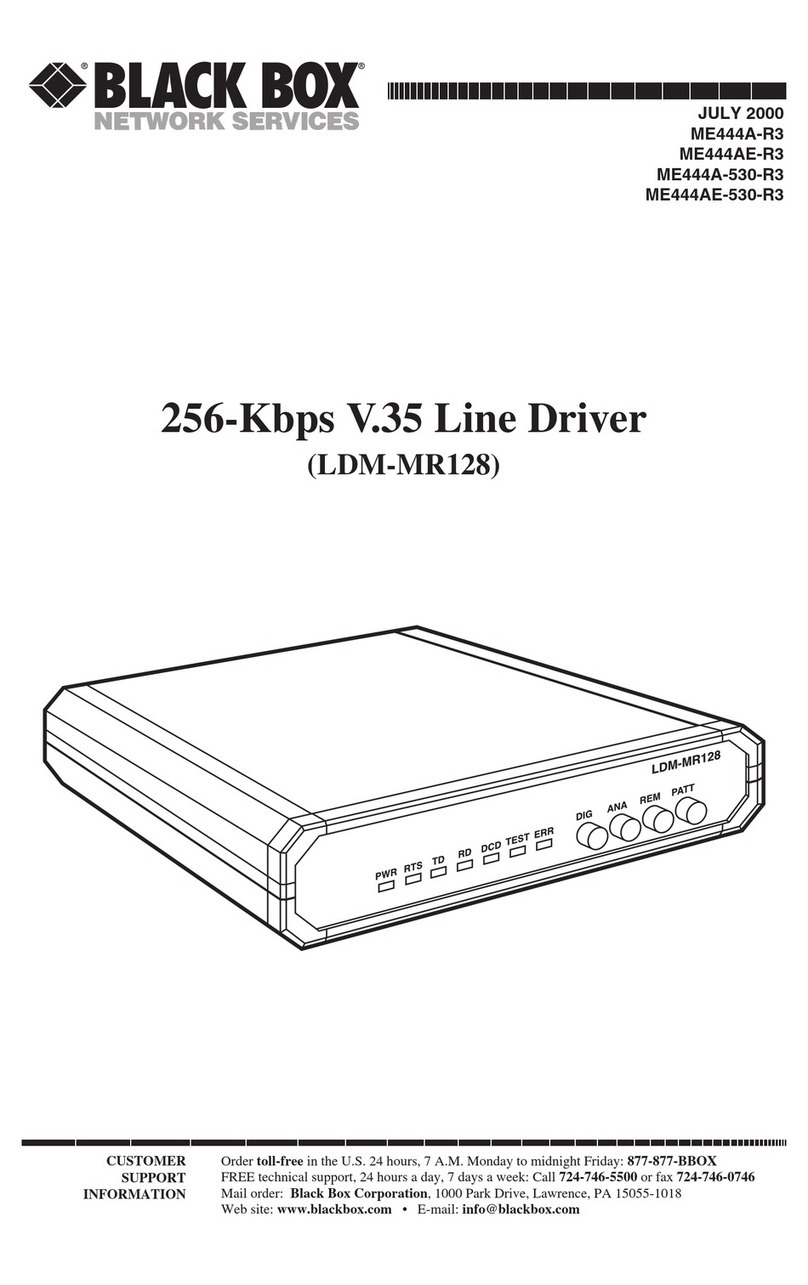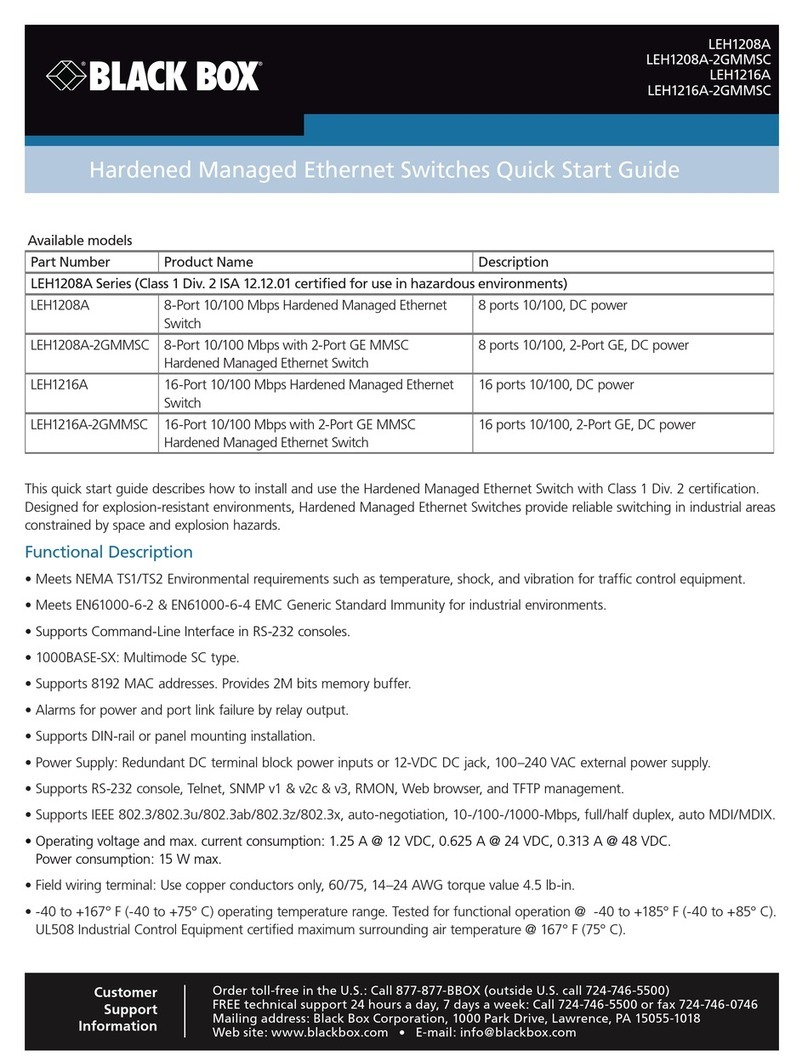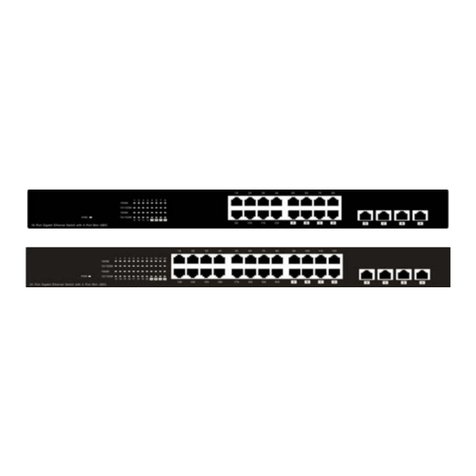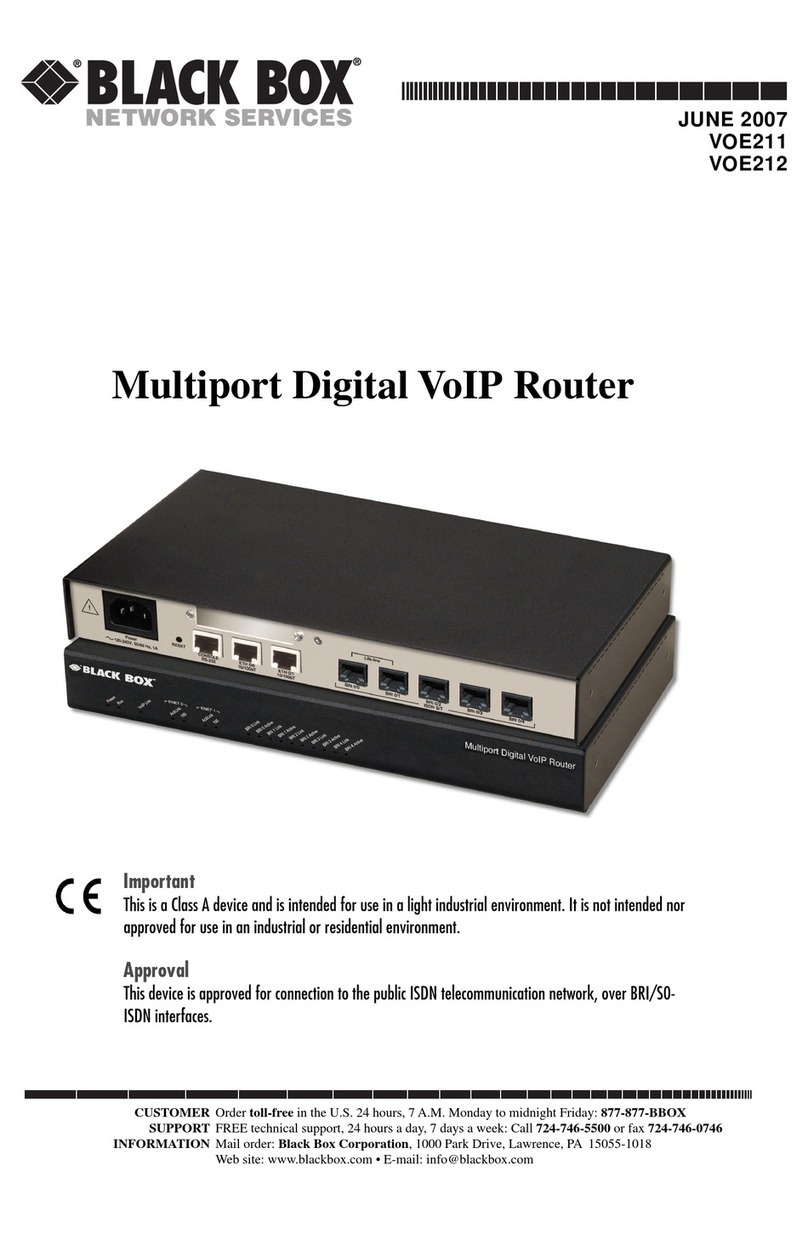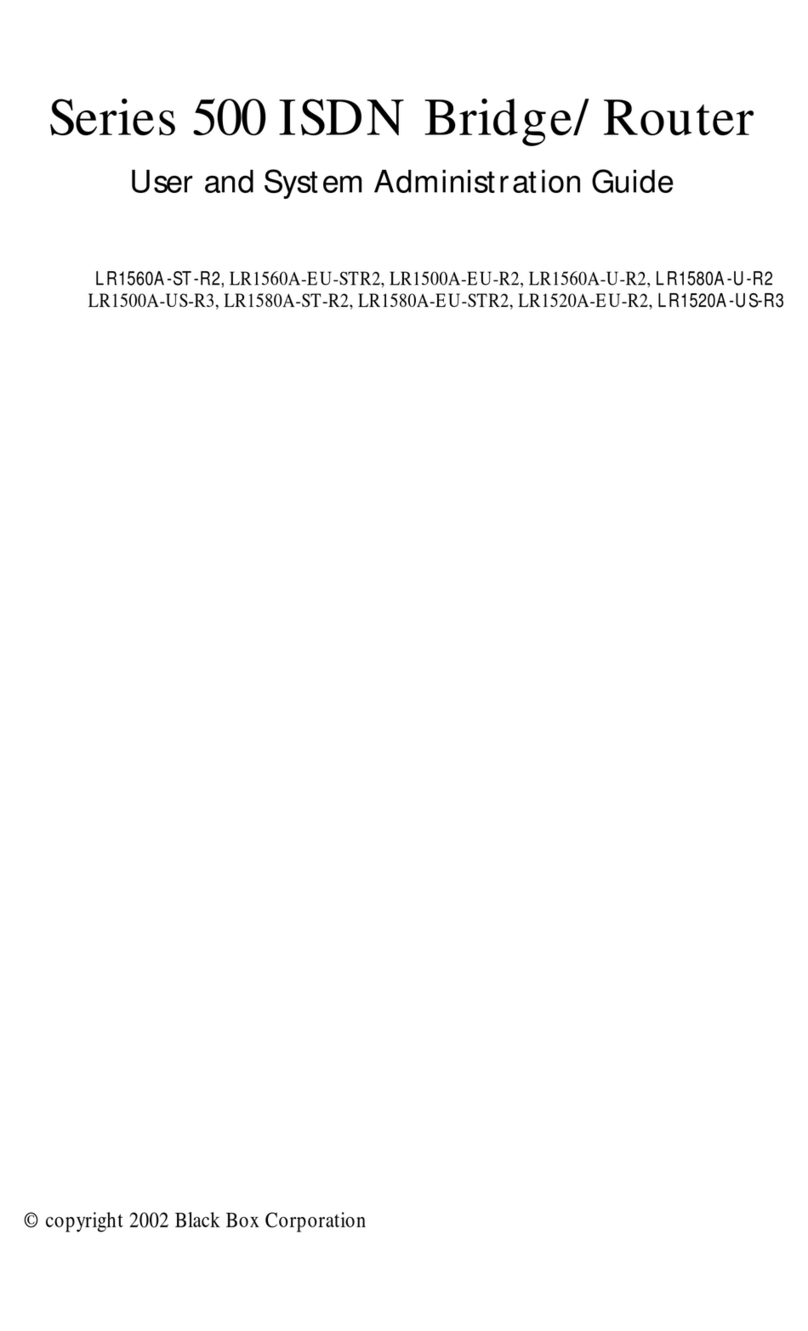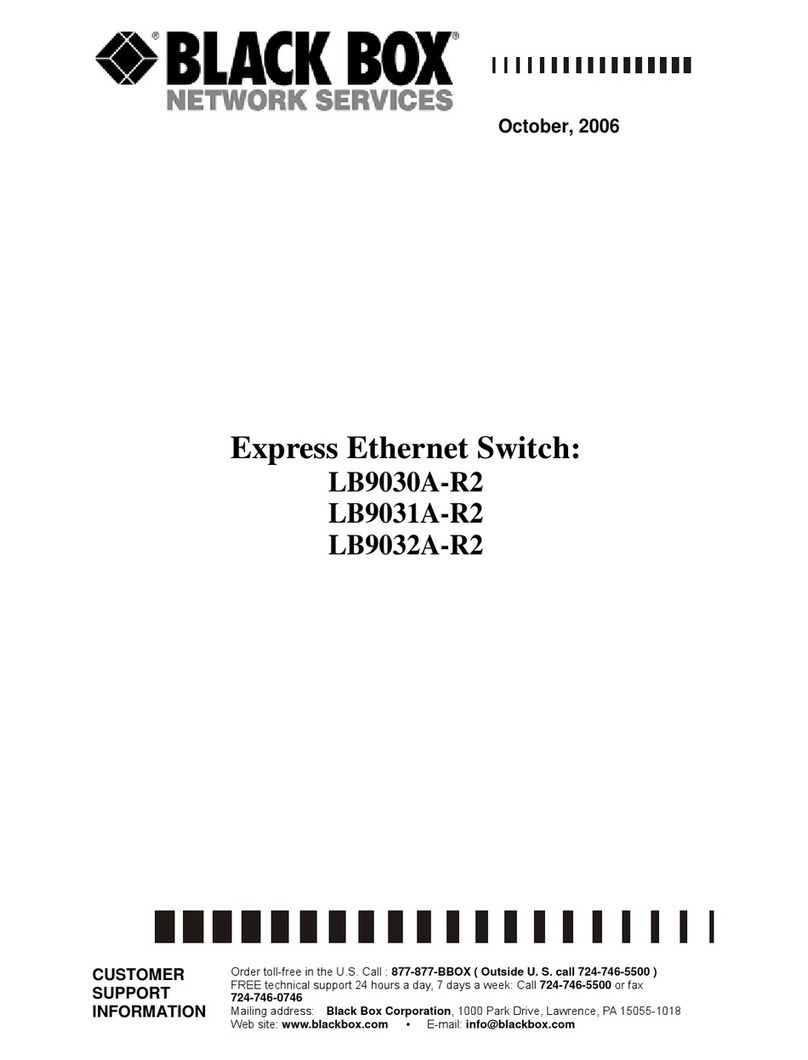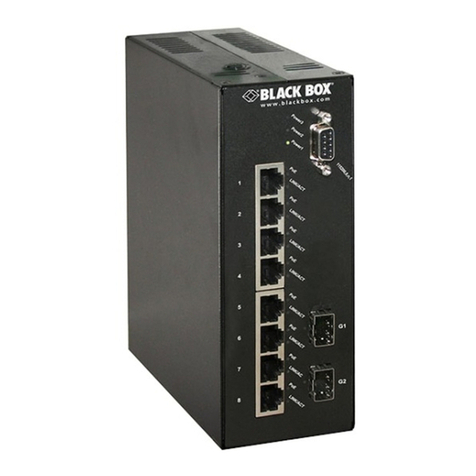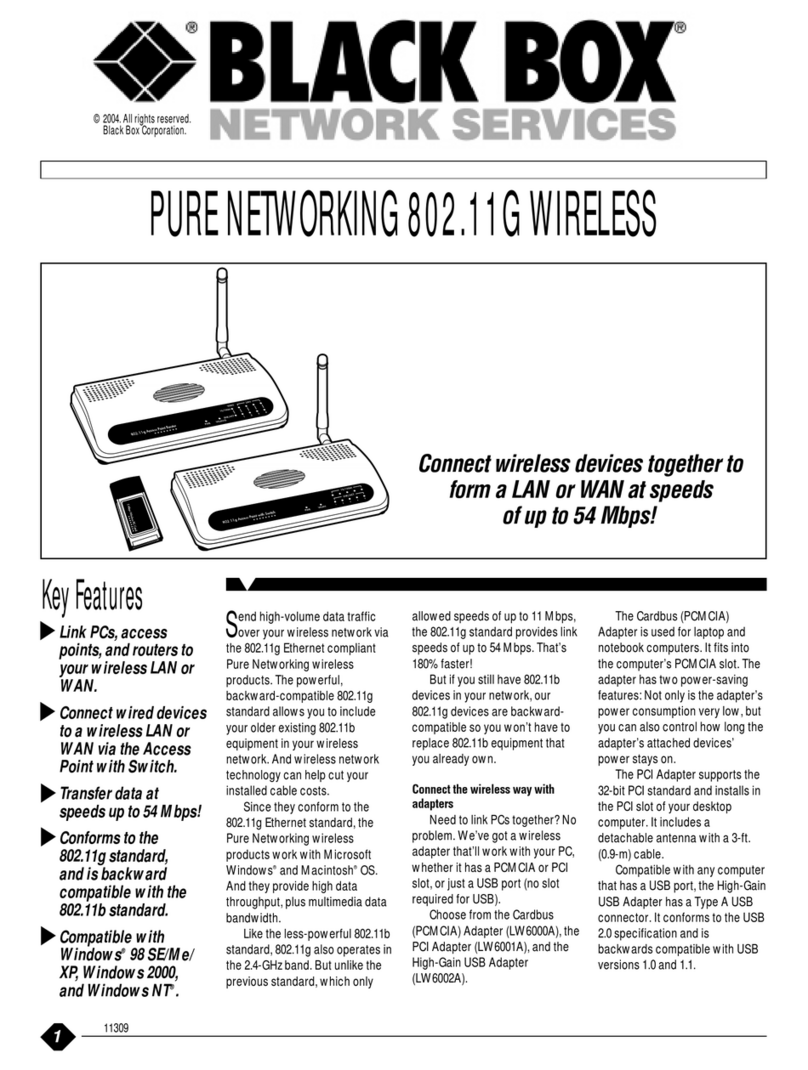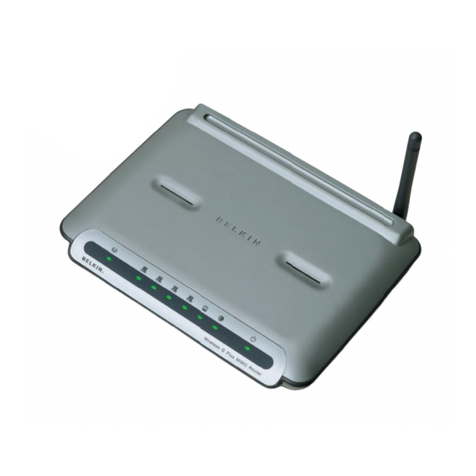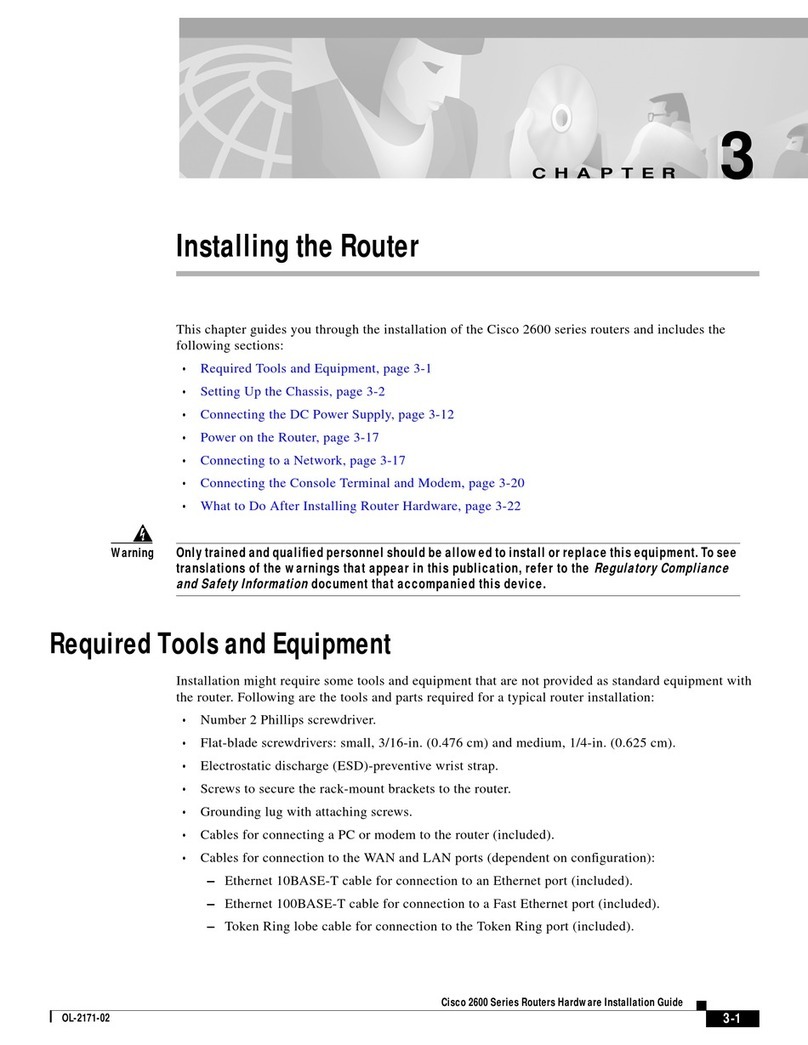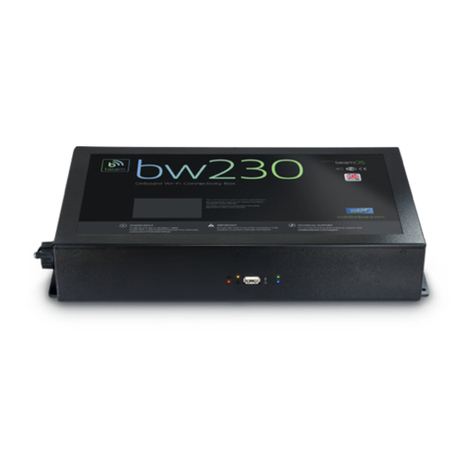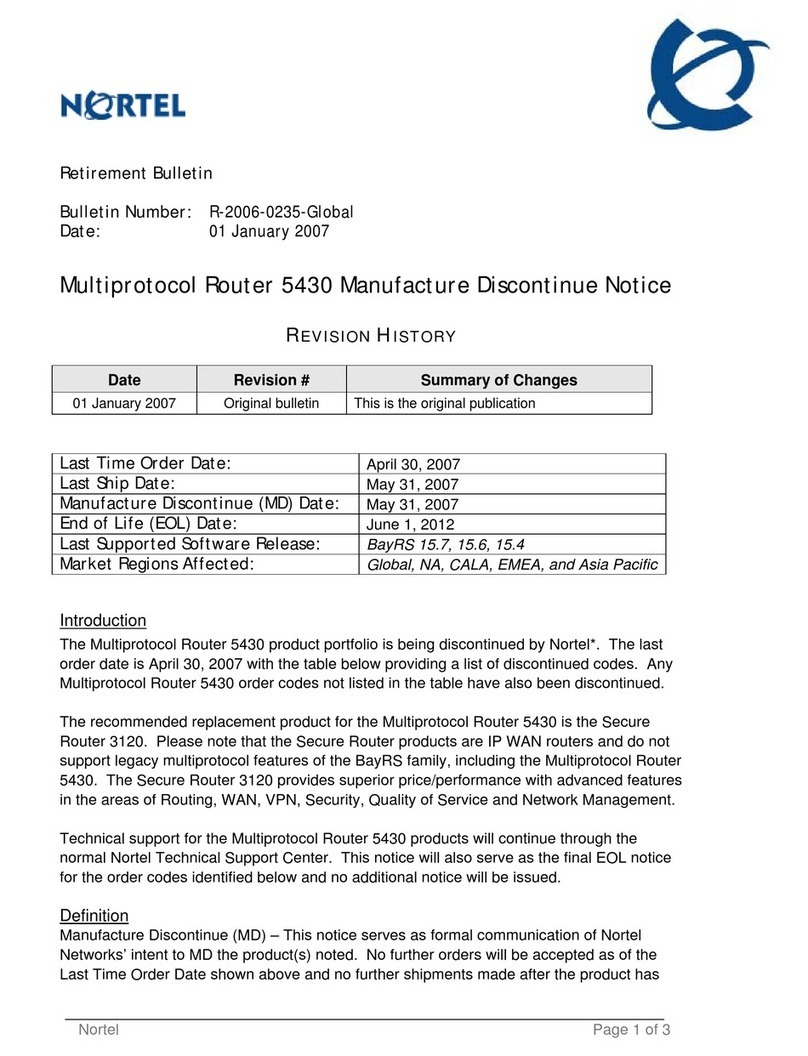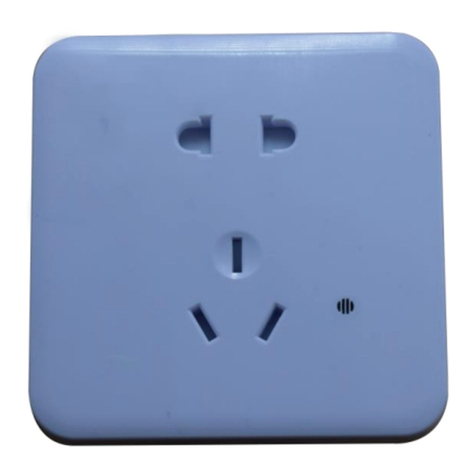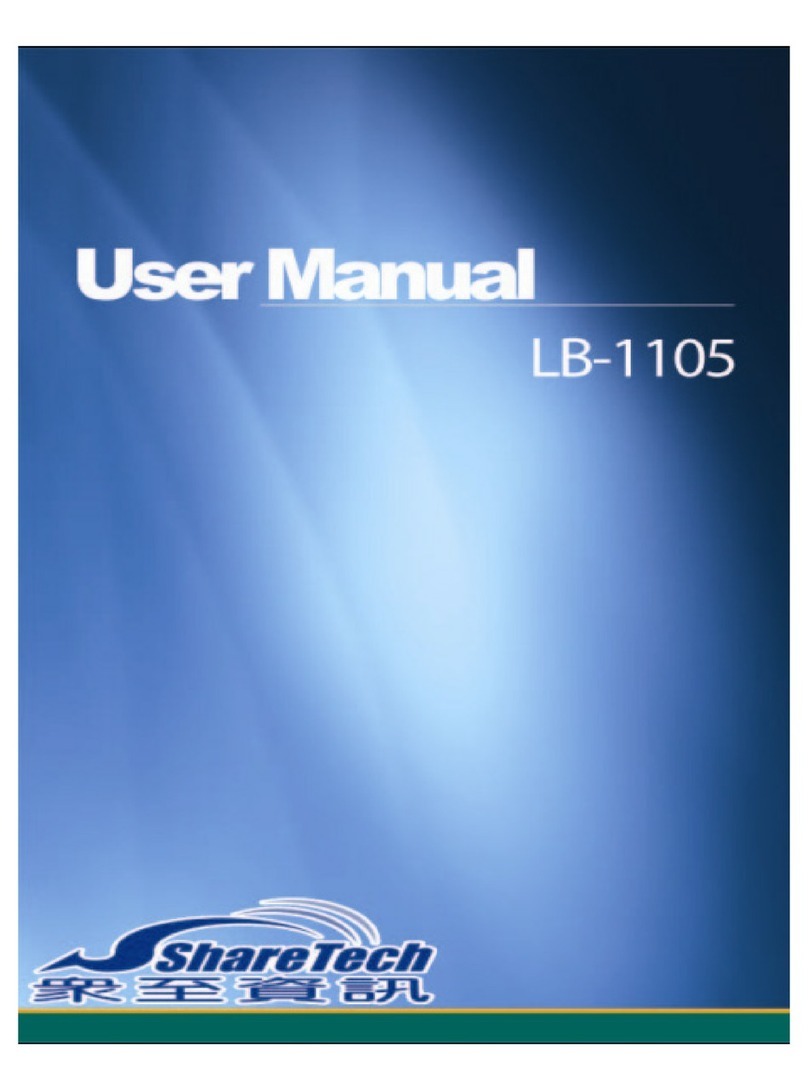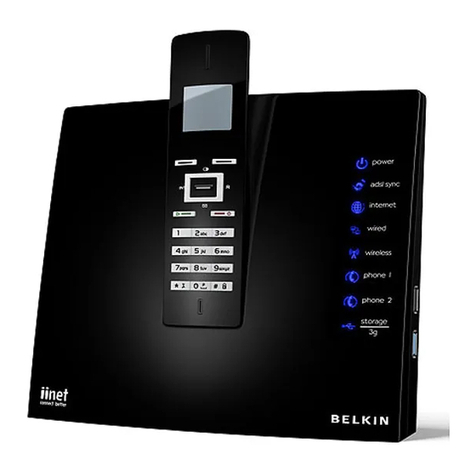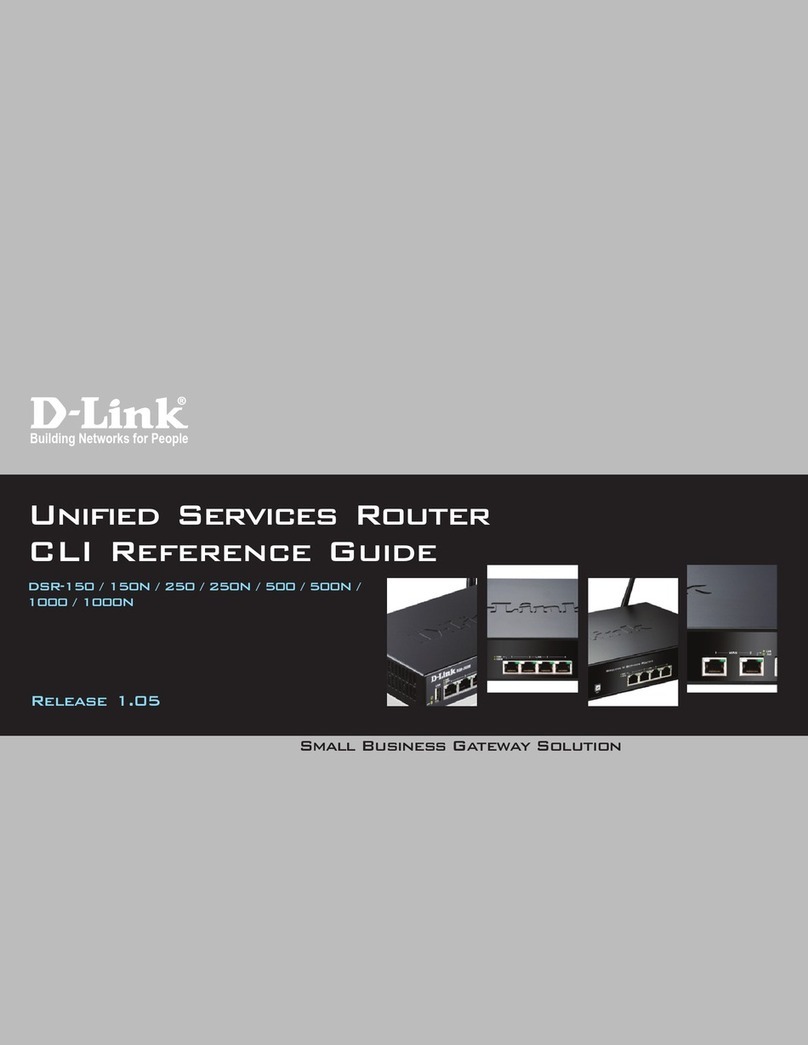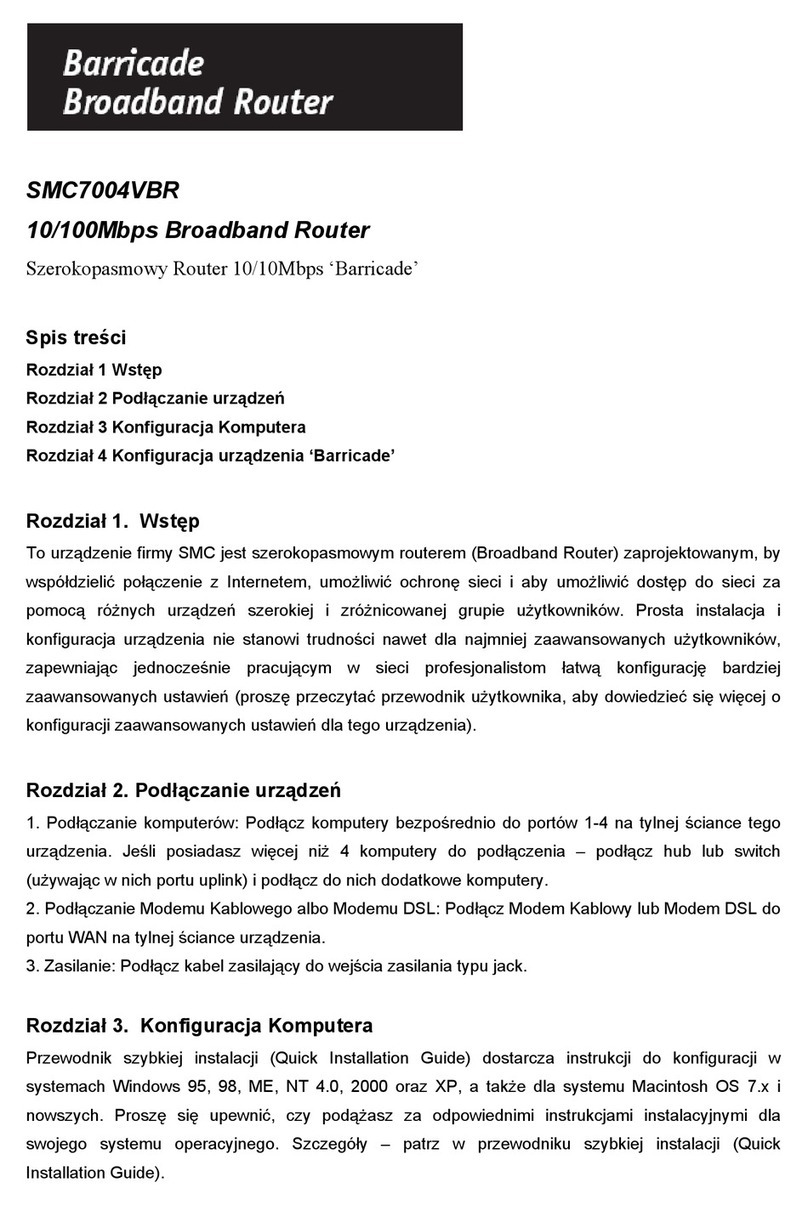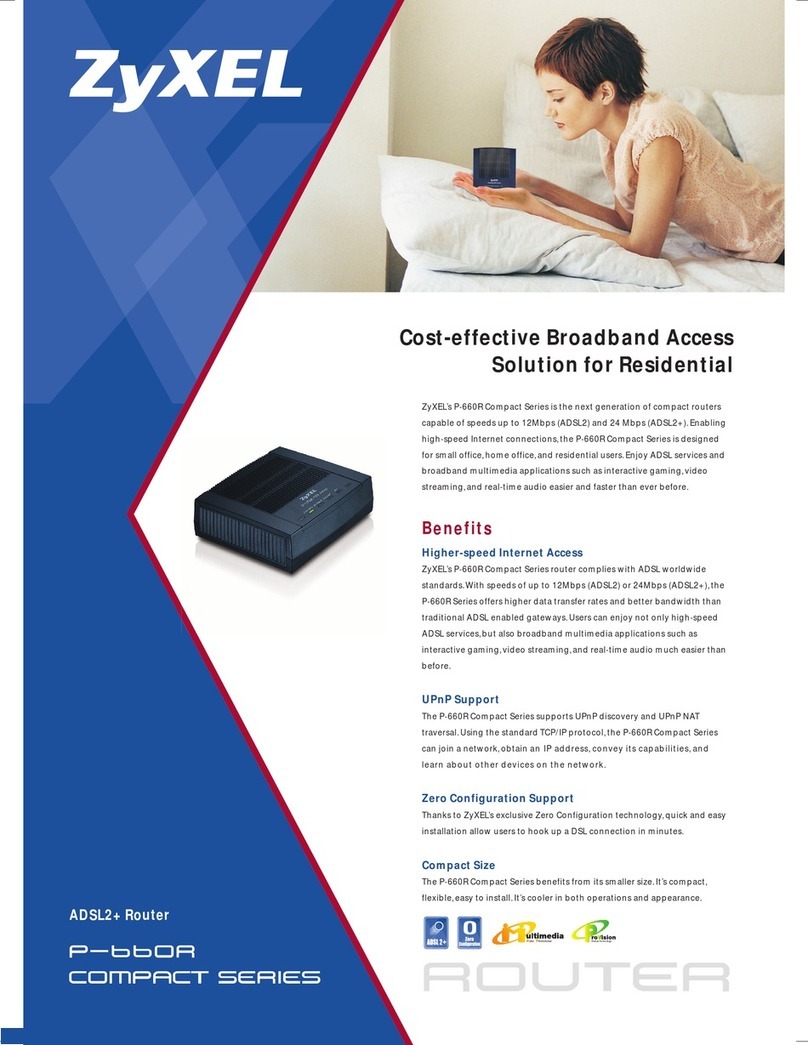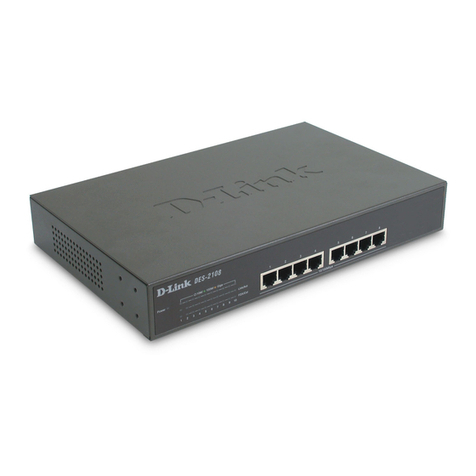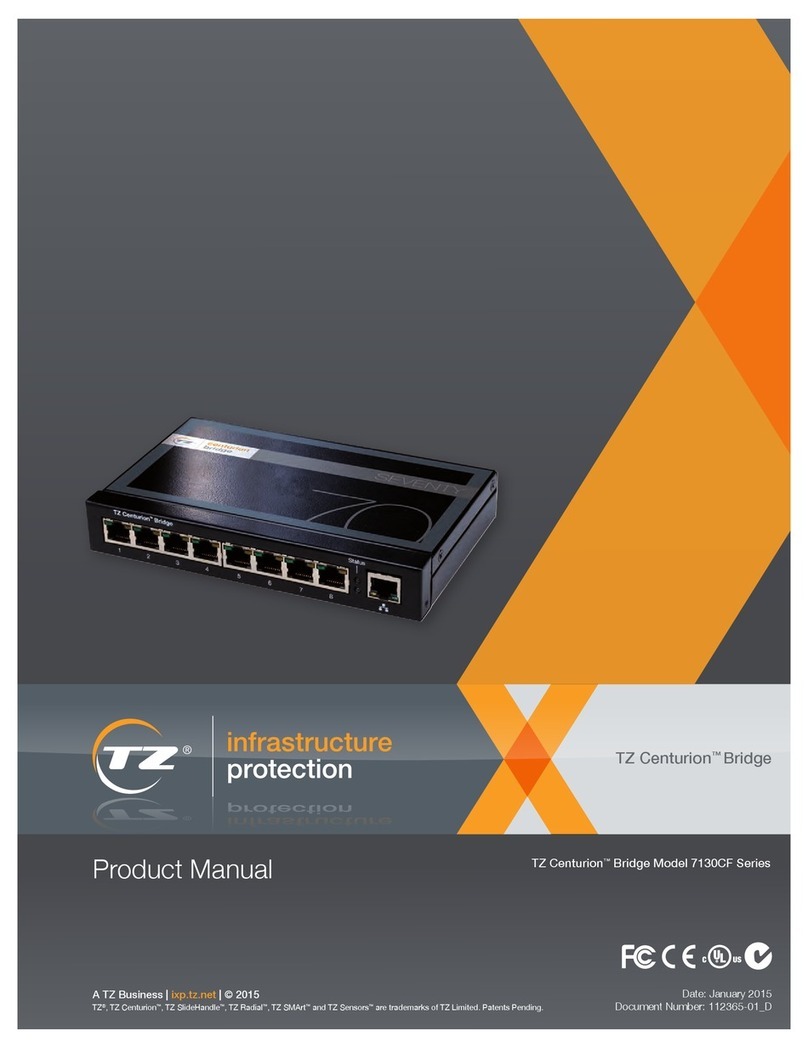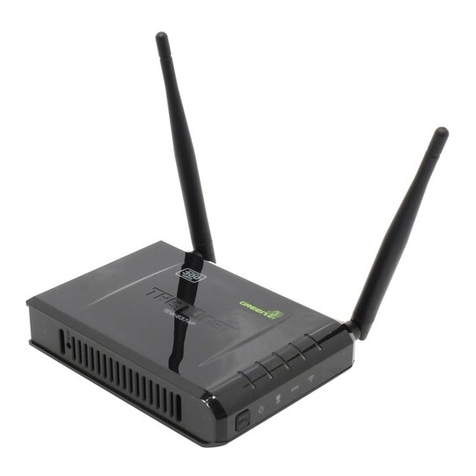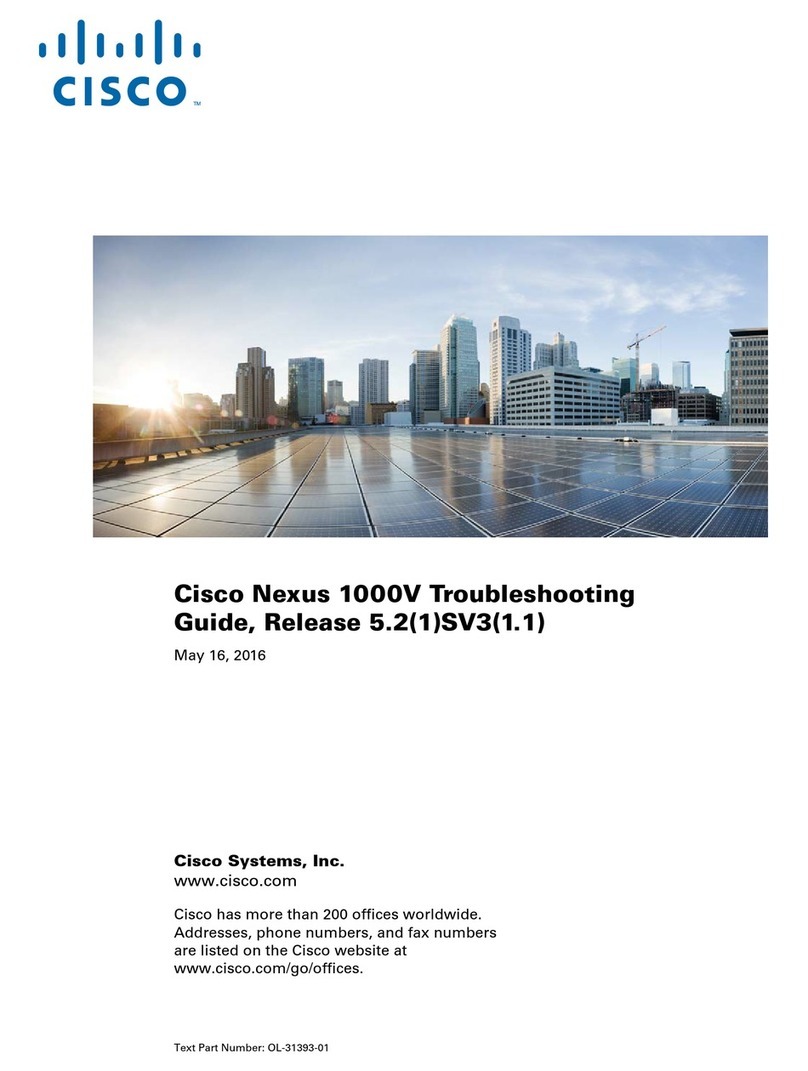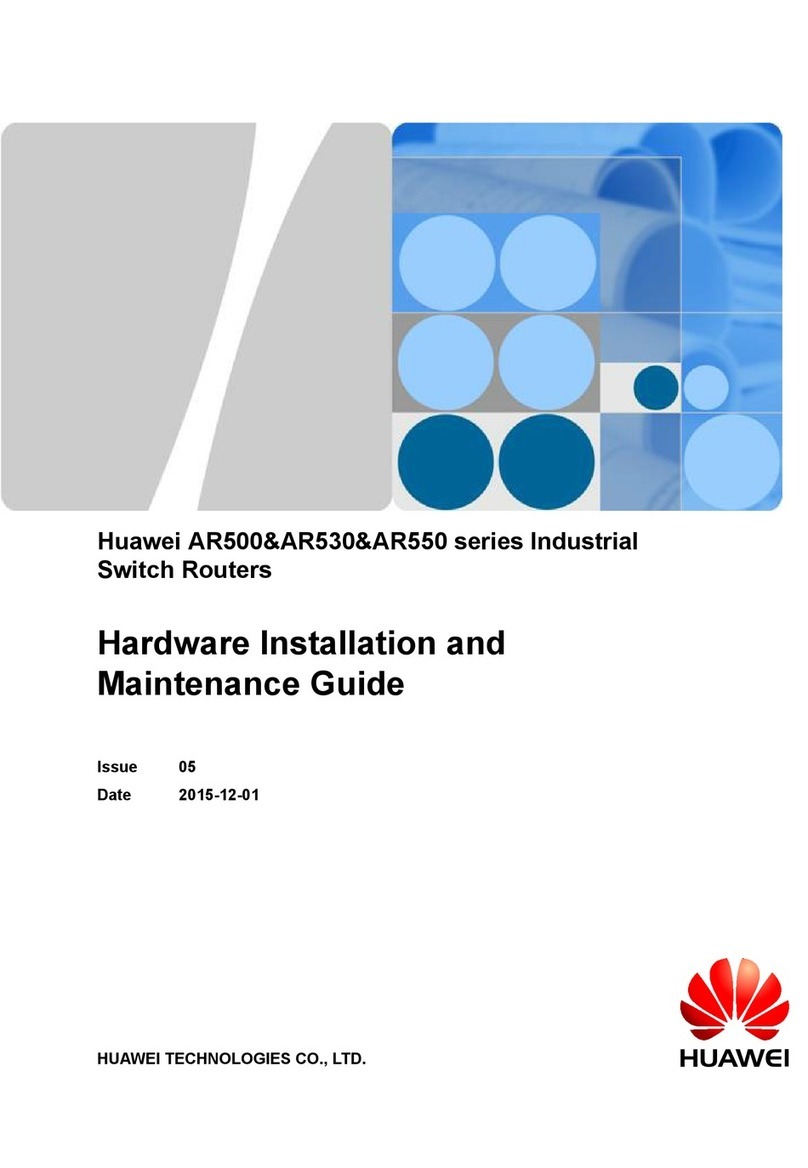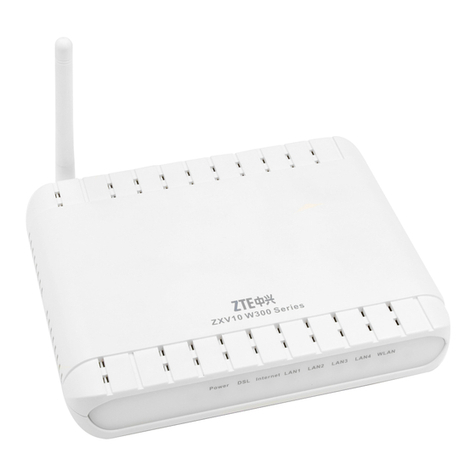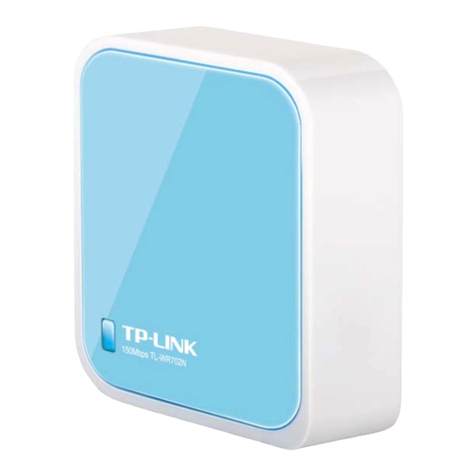2
and LB9901AE AST), which
contains one AUI RPM and
one fiber ST
®
BPM.
The chassis also houses the
main circuit board, which is used
to power the modules and serves
as a connection plane between the
BPM and RPM cards. The top side
of the chassis has one DC power
jack for the included external
power supply, and one green
power (PWR) LED, which lights
when DC power is present.
Repeater port modules available:
The RJ-45 R M card (on the
LB9901A RJ, LB9901AE RJ,
LB9901A TST, and LB9901AE TST)
supports Ethernet twisted pair
segments of any standard length.
It has a single RJ 45 connector,
which is shielded to minimize
emissions and to accept either
unshielded twisted pair (UTP)
or shielded twisted pair (STP)
segment connections.
The RJ 45 RPM also has a
slide switch for cascaded or uplink
connections, so you won’t need a
special crossover cable.
Use this RPM in 10BASE T UTP
environments with maximum seg
ment distances up to 100 meters
(328 ft.) or STP environments with
distances up to 150 meters
(492.1 ft.). The RPM also contains
an internal transceiver.
The BNC R M (included with
LB9901A BNC and LB9901AE BNC)
features a standard 10BASE2
coax connector for ThinNet BNC
connections. You can terminate a
link that the BNC RPM is connected
to by simply flipping its internal slide
switch—there’s no need for a 50
ohm terminator or a“T” connector
(unless your application specifically
requires one).
The BNC RPM includes one
partition (PART) LED and one
receive (RX) LED. PART flashes
amber when the segment is
automatically partitioned. As soon
as normal transmission resumes,
the segment is reestablished
automatically. RX lights green
when data is received.
The AUI R M (found on our
LB9901A AUI, LB9901AE AUI,
LB9901A AST and LB9901AE AST)
enables connections to a 10BASE5
(Thicknet) backbone or to any AUI
segment, functions as an IEEE 802.3
repeater, and has a DB15 AUI
female connector and a slide lock.
It’s also a “universal” Ethernet
media interface, because you can
use it with a variety of mini
transceivers to connect to any
media type. Use the module, for
instance, to connect Ethernet
devices using standard AUI
cabling.
For diagnostic purposes, the
AUI RPM has partition (PART) and
receive (RX) LEDs that function the
same as the LEDs on the BNC RPM.
Bridge port modules available:
The RJ-45 B M (included on
the LB9901A RJ and LB9901AE RJ)
has a single RJ 45 connector and
supports Ethernet twisted pair
segments of any standard length.
As with the RJ 45 RPM, the RJ 45
BPM’s RJ 45 connector is shielded
to minimize emissions and con
nects to 10BASE T UTP segments
up to 100 meters (328 ft.) long.
For flexible cabling, the RJ 45
BPM features a MDI X slide switch
for cascading, so you won’t need
a special twisted pair crossover
cable—straight pinning will do.
This module also has an
internal transceiver and three LEDs:
FWD I, FWD X, and LINK. FWD I
blinks green when packets are
being forwarded into the local
segment. FWD X blinks green
when packets are being forwarded
out of the MiniBridge to the
upstream network. LINK lights
green to indicate an operational
segment link.
Our BNC B M (on the LB9901A
BNC and LB9901AE BNC models)
features a standard 10BASE2 coax
connector for ThinNet BNC
connections. This self learning
BPM filters and forwards packets
at full Ethernet wire speed and is
designed to isolate the local
segment (the users and devices
connected to the Workgroup
MiniBridge unit housing the BPM)
from the connecting network (the
users and devices connected
through the BPM’s media
connector).
And because the BNC BPM
has a special switch selectable
internal termination function, you
won’t need a “T” connector and
a 50 ohm terminator.
The module includes a FWD I
LED, which blinks green to indicate
when it’s forwarding packets into
the Workgroup MiniBridge’s local
segment, as well as a FWD X LED,
which blinks green when the
MiniBridge forwards packets to
the upstream network.
The AUI B M (mounted in the
LB9901A AUI and LB9901AE AUI
models) has a DB15 AUI female
connector and a slide lock, and
provides bridge isolation from a
10BASE5 (Thicknet) backbone or
any AUI segments. Self learning,
it filters and forwards packets at
full Ethernet wire speed.
With its “universal” Ethernet
media interface, the AUI BPM can
be used with a variety of different
mini transceivers to provide
connection to any media type (in
particular, you’ll need to use a
transceiver when using the
Workgroup MiniBridge to connect
to a Thicknet segment).
For easy monitoring of activity,
the module has one FWD I LED
and one FWD X LED. These
operate the same as the LEDs on
the BNC BPM.
We also offer a BPM for fiber
connections: the Fiber ST B M
(LB9901A TST, LB9901AE TST,
LB9901A AST, and LB9901AE AST).
This multimode fiber optic local
bridge module has a dual ST type
connectors. When used for
10BASE FL segments, it supports
fiber transmission distances up to
2 km (1.2 mi.). For FOIRL, it supports
fiber segments of up to 1 km
(0.6 mi.).
The self learning BPM filters
and forwards packets at full
Ethernet wire speed and features a
built in transceiver, eliminating the
need for an external transceiver.
It has three status LEDs: The
FWD I LED blinks green when
packets are being forwarded into
the connected local segment; the
FWD X blinks green when packets
are being forwarded out of the
module to the upstream network;
the LINK LED lights green to
indicate an operational segment
link.
Central
Network
Workgroup
MiniBridge
Server based
Workgroup
This configuration is typical of
departmental workgroups. Although
it’s fairly self sufficient, it has been
slowed down by unnecessary traffic
from the rest of the network. By simply
placing a Workgroup MiniBridge in the
workgroup’s uplink connection, local
traffic is reduced, and workgroup
bandwidth is increased.
Bridge
isolation of a
cascaded
workgroup



